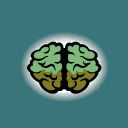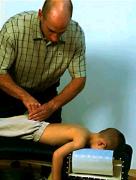 |
 |
 |
 |
 |
 |
 |
Home |
Philosophy |
About Chiro |
Questions |
Office |
 |
 |
 |
 |
 |
 |
 |
Home |
Philosophy |
About Chiro |
Questions |
Office |
 What is Chiropractic?
What is Chiropractic? |
  The Spinal Column and the Nervous System- Your life-line. A vital connection. The central nervous system (brain and spinal cord) is the center of consciousness, learning, thoughts, and emotions. The central nervous system controls the tension of our muscles, blood vessels, glands, and hormones. It controls pain and temperature, touch and vibration, and our special senses such as hearing, seeing, tasting. It gives us spatial orientation (proprioception). The central nervous system is a coordinating mechanism and source from which energy, feeling, or dynamic action are derived. It connects our inner world to our outer world. The spine's main functions are to protect the spinal cord, support the head and ribs, hips and shoulders, and provide an attachment base for muscles. The spine consists of 24 movable vertebrae, plus two sets of fused vertebrae. The sacrum (sacred), often called the base of the spine, consists of 5 fused vertebrae, and the coccyx, also known as the tailbone, is made up of 3 or 4 fused vertebrae. The cervical spine, more commonly called the neck, is comprised of 7 vertebrae. These are smallest of our vertebrae. The first vertebra holds up our world -- the skull -- and is called the atlas. The second vertebra is called the axis, and it serves as a lever that allows the greatest amount of head rotation. The thoracic, or dorsal, spine is found in the upper and mid back. It is comprised of 12 vertebrae to which our ribs are attached. The lumbar spine in the lower back is comprised of 5 vertebrae. These are the largest vertebrae and they support most of the weight of our spine. The lumbar spine often is problematic area.   Chiropractors palpate (touch) the spine to detect vertebral subluxations (misalignment or partial dislocation of the vertebrae). A bone that has moved out of alignment and is fixated. When a vertebra has move out of alignment and is fixated, there is a interference in the transmission of nerve signals to various organs, muscles, etc. and the result is a depletion of health. The body cannot adapt easily to stresses and healing is impaired. Vertebral subluxations can often be painless, especially in the early onset stage. Even though they are painless, they can affect many of the body's vital systems. Damage cause by subluxations can be categorized as: 1. Neuropathology, or nerve damage. When nerves become compressed or stretched, inflammation and irritation occurs. Pain often is a result and over time, there is a decrease in organ function. 2. Kinesiopathology , or joint damage. This occurs when there is a locking (fixation) of misaligned vertebral joints. A result is a decrease in the joint's range of motion When the spine is misaligned, the discs between vertebrae becomes compressed over time. 3. Histopathology , or tissue damage. A vertebral subluxation causes tension and pressure on the soft tissues in the surrounding areas. This commonly results in great tenderness to the touch. 4. Myopathology , or muscle damage. Muscles become weakened over time and as a result will tighten and contract. This often will cause postural distortions. 5. Pathophysiology , or overall health damage. Subluxations can affect our immune system, causing abnormal hormonal responses, and decrease our adaptation to life's stresses. Disease is the result of the inability to adapt to stress. The body loses energy, and degeneration quickly follows. A person with subluxations may often experience fatigue and may even age rapidly. | Philosophy/ Art/ Science | Past | Present | Future | | What is Chiro? | Brochure: What Is Chiropractic | Brochure: Who Needs Chiropractic Care? | Brochure: What Is True Health? | Brochure: The First Subluxation | | Return Home | Office Philosophy | Learn About Chiro | Common Questions | Quotes | Links | The Office | |
||
